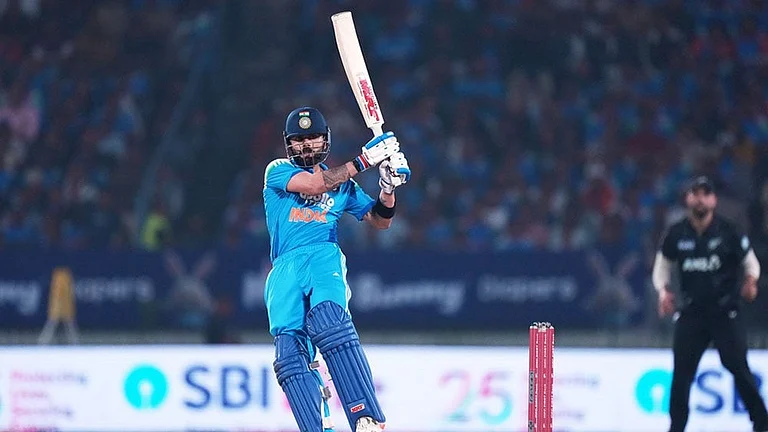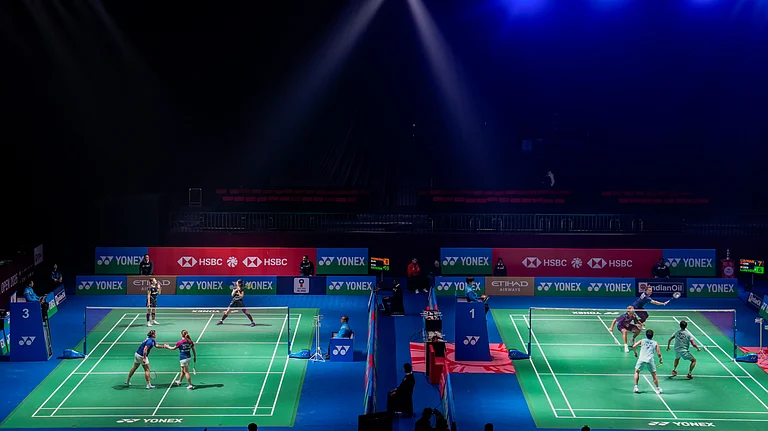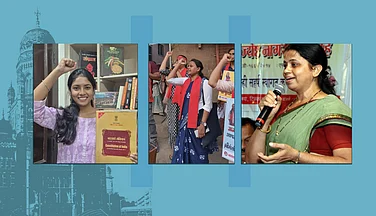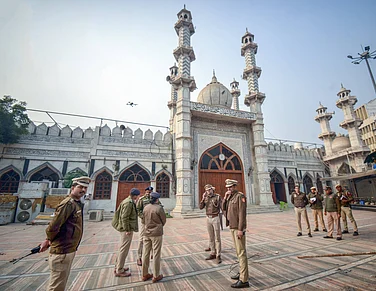India celebrated the birth anniversary of Jayaprakash Narayan (popularly known as JP), who was always the voice of the common people, on October 11. Against this backdrop, this write-up sheds light on a set of contributions and how people remember their revered icon.
Recently, the Muzaffarpur Vikas Mandal (MVM) organised the Samvad Yatra for two weeks to commemorate the association of JP with the Musahari block in Muzaffarpur, Bihar. The campaign started from Salaha village, where JP arrived in 1970 to challenge Naxal forces in the block. The MVM distributed pamphlets and organised a series of events to make the common people aware about his contributions in the block. They invited all socialists and Gandhians who worked with JP. A large number of women too participated in the event. As the MVM activists narrated, the local Naxal commanders had declared they would kill a couple of activists of the Sarvodaya movement in Musahari, which provoked JP to come to Muzaffarpur. He stayed in Musahari for more than one year. On September 28 this year, people started the Yatra from Salaha village in Musahari and visited all those places where JP had stayed for some time. JP stayed in the block at six different places and the Samvad Yatra visited all of these places while chanting the slogans that emphasised on his initiatives.
In the development discourse, the interventions in this block under the leadership of JP were known as the “Musahari Project” that comprised a series of initiatives at the local level. When JP stayed in the wake of Naxalism in Musahari block, he introduced Gram Swaraj (with help from Gram Sabha), Gram Daan, Gram Kosh and Gram Shanti Sena to bring harmony in society as Ramanji, a passionate follower of JP, told the author while articulating the achievements of the project—precisely, 84 Gram Sabhas were formed under the Musahari Project; they distributed more than 24 bighas of land to settle landless families in seven panchayats; they electrified the villages; and, increased the wages of labourers.
In the early 1970s, the agrarian unrest in Bihar worsened exponentially in the wake of the uneven distribution of land, low wages and Soodkhori (interest in excess of a legal rate charged to a borrower). The neighbouring state, West Bengal, was already grappling with the challenges of Naxalism. A precarious situation in the context of inequality and dignity in the villages created an enabling platform for Naxalism. They started mobilising landless labourers, sharecroppers and peasants. A study by Ghanshyam Shah underlined that Bihar witnessed 649 agrarian agitations in 1970, which was a substantial increase in comparison to the previous years. Musahari block under Muzaffarpur district was considered as one of the “hotbeds” of Naxalism in the late 1960s and the early 1970s. Shah hinted in his study that the local police also retaliated with excessive force as the landlords engaged the police once they were attacked by the Naxal forces. It must be noted that the increasing Naxal activities were largely influenced by what happened in Naxalbari in West Bengal. The Naxals threatened the local people and the Sarvodaya activists who were operating in the block. It also grabbed the attention of the ruling dispensation.
Interestingly, the then Planning Commission (Land Reform Division) and the National Commission on Agriculture authorised D Bandopadhyay, a former IAS officer, who played an instrumental role in land reforms in West Bengal, to look into the problem. Bandopadhyay and his team visited Musahari. Their findings were briefly published in Mainstream in June 1973, which provides a clear picture of what happened in Musahari under the leadership of JP. Bandopadhyay noted, “JP’s stay in Musahari Block to ‘fight’ the Naxalite menace through non-violent means brought some of the basic issues which underlay the social unrest to limelight.” He further added, “Violence has been ruthlessly suppressed at Musahari and elsewhere. But the problems remain unresolved.” Bandopadhyay was referring to the issues of landlessness, low wages and Soodkhori in Musahari. He clearly underlined in the early 1970s that the marginalised communities like the Musahars in Musahari block were forced to consume “rats” as their wages were mostly in the form of coarse grains, and they were unable to feed their families.
Moving beyond the “Musahari Project”, the Bihar movement (or the JP movement) can be considered as one of the most enduring legacies of JP where he led various competing political forces to challenge the turf of the state government in Bihar in 1974. The Congress party was in power at the Centre. JP vehemently criticised the then prime minister, Indira Gandhi, and her policies. She imposed emergency in 1975. With increasing dissenting voices against the Congress government, a large number of political rivals, including JP, were put behind bars in various cities. The opposition parties from different political hues united to challenge the emergency under the guidance of JP. Ultimately, Raj Narain, a well-known socialist leader from Varanasi, defeated Indira Gandhi in the general election in 1977 from Raebareli. Then, JP did not join the first non-Congress government.
As far as the JP movement was concerned, a new breed of political leaders such as Lalu Prasad Yadav, Nitish Kumar, and Sushil Kumar Modi emerged from Bihar. They viewed the JP movement as a political departure from the past. A close examination of the JP movement reveals that there are two strands of his political followers—one section represented by politicians like Lalu Prasad who still evoke JP and the JP movement from time to time for their own political mileages and to counter or isolate their political rivals. On the other hand, the second section is largely unnoticed, though they directly worked with JP during different occasions.
Lalu Prasad can be considered as the most vocal politician of the movement. He dominated Indian politics for many decades. After becoming the chief minister of Bihar in 1990, Lalu Prasad frequently talked about garib-gurba (poor people). He came up with a new narrative of governance, which was inextricably linked with the rhetoric of “social justice” and “socialism”. His political rhetoric was riddled with passing references related to JP and the JP movement. He crafted his audiences in such a way that reflected (and still does) JP as a venerable leader who inspired people from the marginalised communities. He continued to substantiate his political arguments while naming JP and the JP movement. Despite his association with the JP movement, Lalu faced severe charges of corruption though his political position towards secularism remained unparalleled.
The second section is related to those passionate followers who worked with JP for many years in remote areas like Musahari (Muzaffarpur), and Rosra (Samastipur). They don’t have any political aspirations, unlike political heavyweights. Many people in Bihar who are in their seventies and eighties are trying to make JP and his contributions alive at the village level. These khadi-clad activists are from different castes and communities. Activists like Rameshwar Thakur, Ramanji and Surendra Kumar from Muzaffarpur view the “Musahari Project” as a well-crafted intervention to strangulate Naxalism. Interestingly, their vocabulary is not aggressive. It’s very difficult to distinguish a “socialist” and a “Gandhian” in these areas. They continue to articulate pressing problems like water logging, poverty, migration, low wages and education. They address gatherings while recalling their experiences in feeble voices. Whenever they recalled the looming threat from the Left-wing extremism in late 1960s and the early 1970s, a sense of fear and uncertainty reflected in their conversations though their vocabularies entail value-neutral attributes. They don’t reflect any aggression even for the Naxals. Their conversations clearly reflect that JP is a revered icon for them even after more than 50 years.
(Views expressed are personal)
Vivek Kumar Rai is a PHD from the Teri School Of Advanced Studies, New Delhi
(This appeared in the print as 'Total Revolutionary')























